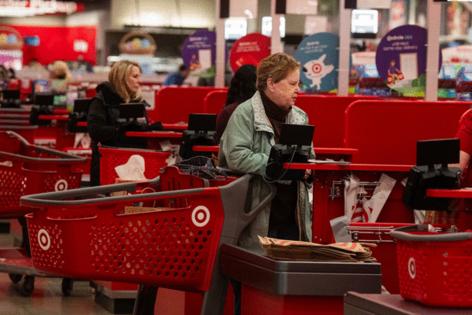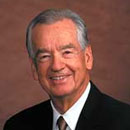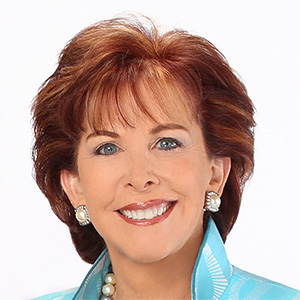Target will invest $1B more in store, merchandise refresh as sales slide continues
Published in Business News
Target will spend an additional $1 billion next year to revamp merchandise and improve stores as sales and profits continue to slip and the retailer tries to catch up to competitors.
The company also announced a new partnership with OpenAI to expand online shopping options as it reported quarterly results Wednesday.
Long known for clean stores and on-trend products, the Minneapolis-based retailer has been facing increasing pressure as shoppers and analysts point to messy aisles, thin inventory and dull merchandise.
That slip has allowed Walmart to gain ground on Target’s claims to fame, especially as consumers grow more anxious about rising prices.
Target reported Wednesday a nearly 3% decline in same-store sales for the August-to-October quarter and a nearly 20% drop in profits year over year.
Here are some takeaways from the company’s latest financial results.
Increasing investment in stores
Target had already committed $4 billion in capital improvements for next year. With the additional $1 billion, the retailer now plans to spend $5 billion to advance the priorities of incoming CEO Michael Fiddelke.
The extra $1 billion will go toward remodeling more stores and making “some of the biggest changes in major assortment categories,” a Target spokesman said.
The company did not otherwise break down how the money will be used. Fiddelke’s three focuses include improving product assortment, enhancing the in-store experience and expanding its use of technology.
The retailer will share more details of its stepped-up plans in March when it reports year-end earnings.
Analysts have pushed for heavier investment, echoing the strategy under outgoing CEO Brian Cornell, who poured$7 billion into remodels and technology in the years leading up to the pandemic.
But there’s debate about where Target needs to focus — and how much it should spend.
Scot Ciccarelli, managing partner at Truist Securities, estimates cutting prices by 1% could reduce earnings by as much as 20%, and boosting spending on stores and labor could add another $700 million in annual costs.
Others argue Target doesn’t need a full overhaul, but it must sharpen execution of the basics.
UBS analyst Michael Lasser pointed to more funding for in-store staffing and wages, along with further supply-chain improvements in a recent research note.
Target said on-shelf availability of its most popular items improved compared with the same quarter last year. The retailer has also made adjustments to its “stores as hubs” model by reducing online order fulfillment in busy stores.
Target’s slower, but growing, AI push
Target has been quieter than other big retailers about its use of artificial intelligence (AI). That changed recently when the company rolled out a suite of AI-powered features, including a gift recommendation tool and adjustments to its app for in-store shoppers.
The retailer also announced a partnership Wednesday with OpenAI. Target said it will be one of the first retailers to allow customers to purchase multiple items — including groceries — in a single AI-assisted transaction, with options for drive-up and pickup.
“Our goal is simple: make every interaction feel as natural, helpful and inspiring as chatting with a friend,” said Prat Vemana, Target’s chief information and product officer, in a news release.
The first version of the chatbot will launch next week in Target’s app.
Walmart unveiled a similar partnership with OpenAI in October as part of an expansion of its AI capabilities, including its Sparky shopping assistant and a newly created executive vice president of artificial intelligence, product and design.
“We’ve put AI to use across the business, for years in many cases,” Fiddelke said on a media call. “But we need to be at the forefront of how the consumer’s going to shop, and that means being at the forefront of technology.”
Consumer spending still choppy
Target continues to see shoppers affected by tariff-related uncertainty, job insecurity and broader economic unease. The company reported growth in beauty, food and beverage and hardlines, which includes popular items like trading cards, toys and electronics.
Chief Commercial Officer Rick Gomez said customers are still showing up for big moments but making trade-offs by prioritizing the core parts of each season, including choosing candy and costumes for Halloween over decorations.
“As we go into Christmas and the holidays, we think the consumer will prioritize what goes under the tree vs. what goes on the tree,” Gomez said on the media call.
Target joined other retailers this fall in cutting prices on staples such as milk, bread and butter, lowering costs on 3,000 grocery and household essentials. And in stores, employees have been instructed to greet or acknowledge any customer within 10 feet — part of a renewed emphasis on guest service.
“The ongoing preference for everyday items continues to weigh on Target, as its merchandise assortment skews toward discretionary products,” wrote Joe Feldman, senior managing director at Telsey Advisory Group, in an analyst note ahead of earnings.
Home Depot, one of the first major retailers to report earnings, said Tuesday that it saw weaker home improvement demand and mild consumer demand, leading to lower-than-expected sales.
©2025 The Minnesota Star Tribune. Visit at startribune.com. Distributed by Tribune Content Agency, LLC.












Comments